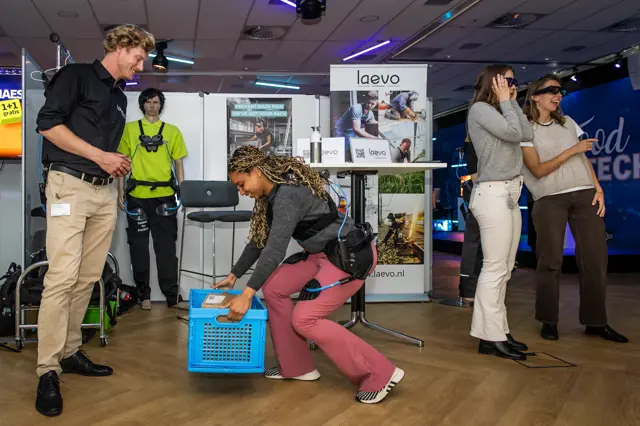< Back to news
The Shallow Brain hypothesis
Not only AI systems, but also theories of brain function often assume deep networks. The theory of Predictive Coding (predictive coding) provides an important framework for understanding brain functions, which posits that the brain constantly generates and updates internal models of the environment. Predictive Coding models also predominantly assume deep, hierarchically organised networks.
In a recent paper published in Nature Reviews Neuroscience, researchers from the University of Amsterdam and the University of Tartu (Estonia) propose a groundbreaking new theory - the Shallow Brain hypothesis - that challenges the commonly held view that neural computation occurs exclusively through hierarchical structures.
This article was published on the website of the University of Amsterdam (in Dutch).
The image was generated by the University of Amsterdam using Adobe Firefly (keywords: shallow brain architecture).


14 November 2023
A new theory sheds light on the ‘shallow’ structure of the brain and AI
Recent advances in artificial intelligence are astounding. Some people even claim that AI systems are already sentient.
These AI systems often use so-called 'deep learning' networks where information is processed through an accumulation of interconnected layers (therefore called 'deep'), each consisting of artificial, mathematically defined neurons. It is believed that deeper networks (i.e. with more and more layers of artificial neurons) have more computational power; therefore, the current trend in AI is to use such deep network architectures.
The Shallow Brain hypothesis
Not only AI systems, but also theories of brain function often assume deep networks. The theory of Predictive Coding (predictive coding) provides an important framework for understanding brain functions, which posits that the brain constantly generates and updates internal models of the environment. Predictive Coding models also predominantly assume deep, hierarchically organised networks.
In a recent paper published in Nature Reviews Neuroscience, researchers from the University of Amsterdam and the University of Tartu (Estonia) propose a groundbreaking new theory - the Shallow Brain hypothesis - that challenges the commonly held view that neural computation occurs exclusively through hierarchical structures.
According to this new theory, the brain is characterised by a shallow structure elegantly intertwined with the conventional, deep hierarchy of cortical regions. Shallow, fast parallel computations and deep, slow computations coexist in the brain without interfering with each other. They can even reinforce each other by offering shortcuts for decisions that would otherwise take too long. This theory inspires AI research to look for new directions and better imitate the brain.
This article was published on the website of the University of Amsterdam (in Dutch).
The image was generated by the University of Amsterdam using Adobe Firefly (keywords: shallow brain architecture).
Vergelijkbaar >
Similar news items

July 22
Veni grants for 28 UvA and Amsterdam UMC researchers
The Dutch Research Council (NWO) has awarded Veni grants to 28 researchers from the University of Amsterdam and Amsterdam UMC.
read more >

July 10
AI glasses display live subtitles in the theatre
Het Nationale Theater is testing AI-powered glasses that provide real-time subtitles during performances—including translation into over 230 languages.
read more >

July 10
Albert Heijn explores AI use, but avoids the hype
At its FoodTech Week, Albert Heijn showcases how AI is already used across logistics, pricing, and customer interaction—yet refuses to adopt a separate AI strategy.
read more >